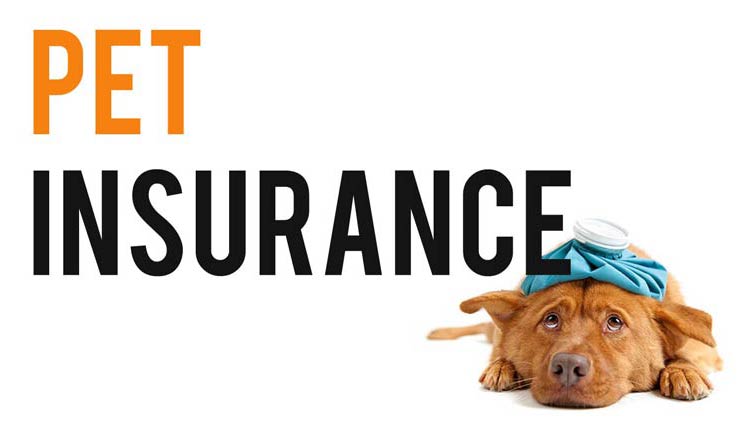What Is Pet Insurance
What Is Pet Insurance and How Does It Work?
What Is Pet Insurance?
Pet insurance is a policy that covers your pet’s health-related expenses. Although similar to human health insurance, it works differently – you pay for veterinary bills upfront and get reimbursed later. While you can insure any dog or cat, some providers have age limits that may affect enrollment.
Standard pet insurance plans typically cover diagnostics and treatments for accidents and illnesses. However, you can opt for a cheaper, accident-only plan that covers emergencies and injuries. Standard plans won’t cover routine care like annual checkups or vaccines, though many providers offer additional wellness coverage for those services.

How Does Pet Insurance Work?
Pet insurance usually follows a reimbursement model. After paying your vet, you submit a claim through an online portal, mobile app, email, or regular mail. Once the claim is processed, your insurance reimburses you for a portion of the bill, depending on your plan’s specifics. Typically, you’ll receive 70% to 90% of the bill minus any deductible or ineligible expenses, with the rest being your responsibility. Providers will reimburse up to the annual or per-incident limits of your plan.
Here’s a typical step-by-step process for filing a claim:
- Visit the vet and pay for services.
- Upload or email your invoice to your provider.
- If it’s your first claim, include your pet’s medical records from the past year.
- The provider processes your claim, subtracts your deductible, and calculates your reimbursement rate.
- You receive the reimbursement via direct deposit or check.
Some companies also offer vet direct pay, where you pay only your portion of the bill upfront, and the insurance company covers the remainder directly to the vet. While this option is more convenient, it may cost more and restrict you to veterinarians within the provider’s network.

Deductibles, Reimbursement Rates, and Annual Limits
Your deductible is the amount you pay out of pocket before receiving reimbursement. Some companies apply a per-incident deductible, while others use an annual deductible. Deductibles can range from $0 to $1,000, depending on your plan.
You’ll also choose a reimbursement rate—typically 70%, 80%, or 90%. A lower rate means lower monthly premiums, but you’ll cover a larger share of the bill. A higher reimbursement rate increases your premium but results in greater payouts for approved claims.
Most providers offer annual limits ranging from $2,500 to unlimited coverage. Lower limits reduce monthly premiums, but higher limits offer more financial protection.
Do I Need Pet Insurance?
Pet insurance helps protect both your pet’s health and your finances if unexpected emergencies or illnesses arise. Without insurance, veterinary bills can be overwhelming. For instance, treating a urinary tract infection can cost up to $9,115 for a dog or $12,587 for a cat.
In contrast, pet insurance costs between $360 and $600 annually for dogs, and $180 to $360 for cats. To ensure you’re getting the most comprehensive coverage, it’s worth researching the best pet insurance companies to find a plan that suits your budget and your pet’s specific needs.

What Does Pet Insurance Cover?
Pet insurance plans differ, but the most common types are:
- Accident and Illness Plans: Cover costs related to accidents, injuries, and illnesses, helping pet owners manage unexpected veterinary bills.
- Accident-Only Plans: Cover injuries and accidents but not illnesses, making them a more affordable option.
- Wellness Care Plans: Cover routine expenses like vaccinations, checkups, and preventative treatments such as flea prevention.
Coverage often includes diagnostic tests like blood tests, X-rays, and MRIs, as well as treatments like surgery and prescription medications.
Additional Coverage Options
Beyond accident-only and wellness plans, many pet insurance providers offer additional coverage options to address specific needs. You can explore policies that cover hereditary or congenital conditions, which are often more common in certain breeds.
Additionally, some providers offer coverage for behavioral issues, such as anxiety or compulsive behaviors, which can require specialized treatment. These options provide added flexibility to ensure your pet’s health is fully supported, especially for conditions that may not be covered under standard plans.

What Doesn’t Pet Insurance Cover?
Most plans exclude pre-existing conditions—those diagnosed or showing symptoms before enrollment. However, some providers may cover curable conditions if they don’t recur within a set timeframe, usually six to 12 months. Other common exclusions include:
- Pregnancy and whelping
- Cosmetic procedures
- Supplements and prescription foods
- Experimental treatments
- Grooming, boarding, toys, and non-medical expenses
How Much Does Pet Insurance Cost?
On average, pet insurance costs $60 per month for dogs and $32 for cats. Premiums depend on factors like:
- Age: Older pets have a higher risk of illness, leading to higher premiums.
- Breed: Certain breeds are prone to specific health issues, affecting plan costs.
- Discounts: Some providers offer discounts for multiple pets, veterans, or shelter pets.
- Location: Higher costs of living and veterinary care increase premiums.
- Species: Care for dogs typically costs more than for cats.
You can lower your premium by selecting higher deductibles, lower annual limits, or lower reimbursement rates, though this reduces your plan’s overall value.

How Soon After Getting Pet Insurance Can You Use It?
Most plans have waiting periods to prevent fraudulent claims for pre-existing conditions. Accident and illness waiting periods are typically under two weeks, while orthopedic waiting periods may extend up to 12 months. Some providers allow you to waive waiting periods with a vet exam.
Pros and Cons of Pet Insurance
Pros:
- Financial protection in emergencies
- Access to advanced treatments
- Peace of mind regarding emergency care
- Avoiding economic euthanasia
- Better overall pet health with wellness plans
Cons:
- Monthly premiums, regardless of claims
- Coverage limitations or exclusions
- Reimbursement delays

When Is the Best Time to Buy Pet Insurance?
Experts recommend purchasing pet insurance as early as possible – even before bringing your pet home. Early coverage helps avoid exclusions for pre-existing conditions, which can be detected at an initial vet visit.
Pet insurance also tends to be more affordable for younger pets, so locking in a policy early can save money in the long run.


















